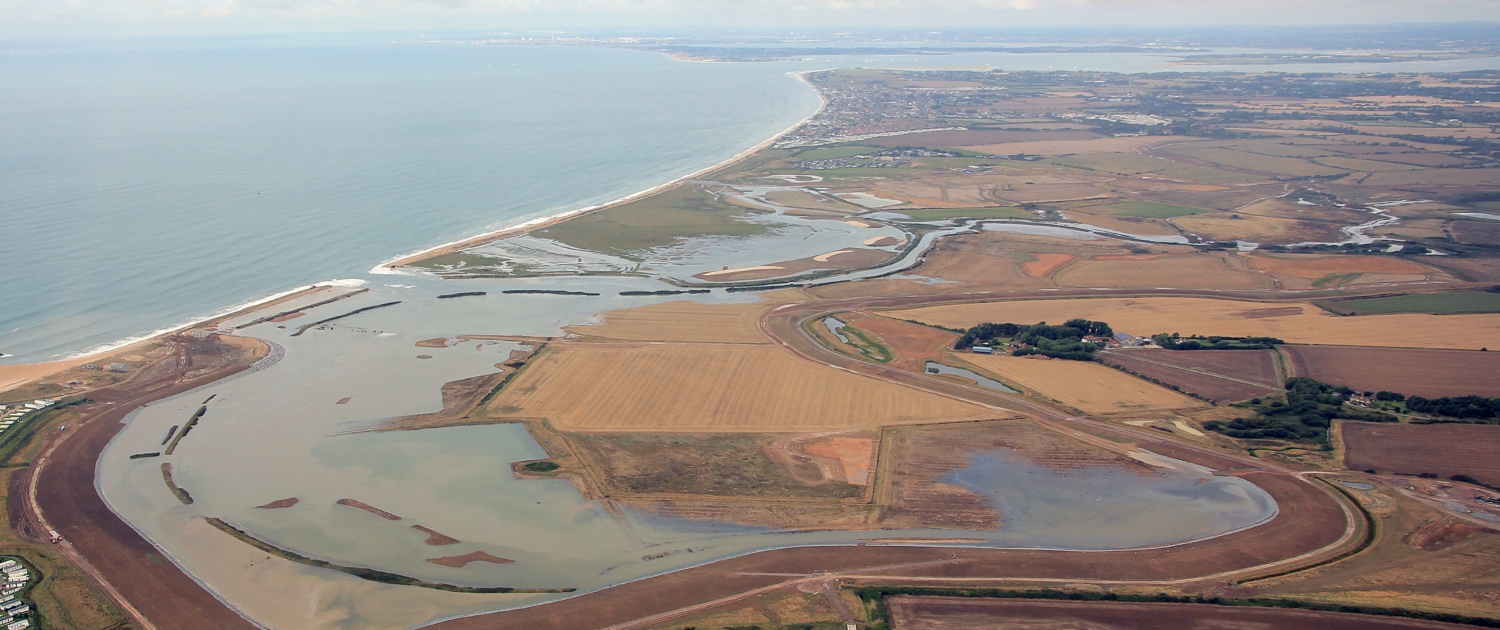What is managed retreat?
Creating an engineered new position of a coastline is called coastal realignment or managed retreat. In the context of managing coastal flooding in the UK, this involves moving the boundary inland.
Coastal managed retreat is a strategy used to protect coastal communities and infrastructure from the impacts of coastal erosion, sea level rise and other coastal hazards, such as storms and flooding. It is when a decision is made to no longer follow a ‘hold the line’ strategy for managing coastlines.
It involves the planned relocation of residents and the removal of structures and infrastructure. A breach is made in the existing sea defences to allow the sea to inundate the land and create new intertidal habitats. Inland embankments are constructed if the area is low-lying to protect against flooding and erosion.
What are examples of managed retreat?
Examples of managed retreat in the UK include Donna Nook on the Lincolnshire Coast, Wallasea Island in the Thames Estuary and the Medmerry flood defence in Sussex.
What are the costs and benefits of managed retreat?
What are the costs of managed retreat?
Social costs: Relocating people to new homes can cause disruption and distress for those affected. Suppose the planned realignment of 40 square kilometres of the North Norfolk coast goes ahead. In that case, it could destroy six villages and the forced relocation of hundreds of people, potentially splintering entire communities. This scenario could become a reality within the next 20-50 years. Some people may feel “let down” by the process of managed retreat and believe that the battle against the sea should continue.
Economic costs: The short-term costs of relocation can be high. For example, the recent Medmerry realignment scheme in West Sussex cost £28 million, while it only costs £0.2 million annually to realign the shingle beach.
Environmental costs: The implementation of managed retreat can result in the loss of large areas of agricultural land. Coastal bird habitats, such as bitterns, cranes, and marsh harriers, may also be affected, potentially leading to a decline in bird numbers. It may take a long time for these populations to recover.
What are the benefits of managed retreat?
Social benefits: Coastal managed retreat can help alleviate the pressure on other areas along the coast and reduce their risk of flooding.
Economic benefits: In the long term, managed retreat may be more cost-effective than maintaining hard engineering defences.
Environmental benefits: The goal of managed retreat is to conserve or enhance the natural environment. It creates new intertidal habitats that can compensate for those lost due to coastal squeeze. For example, at Wallasea, 38 species of birds have been recorded on the newly created mud flats, including ringed plover, dunlin, Brent geese, and shellduck. These species may be present in significant numbers.
Related Topics
Use the images below to explore related GeoTopics.


